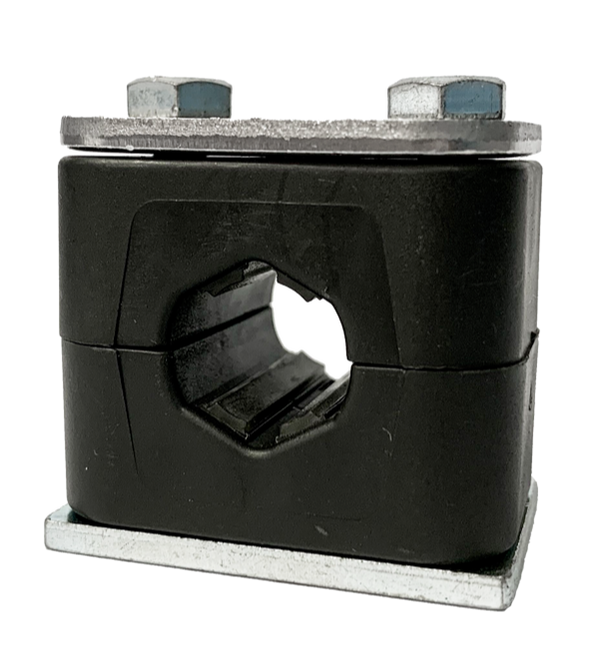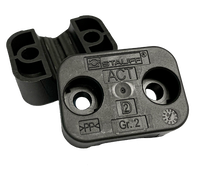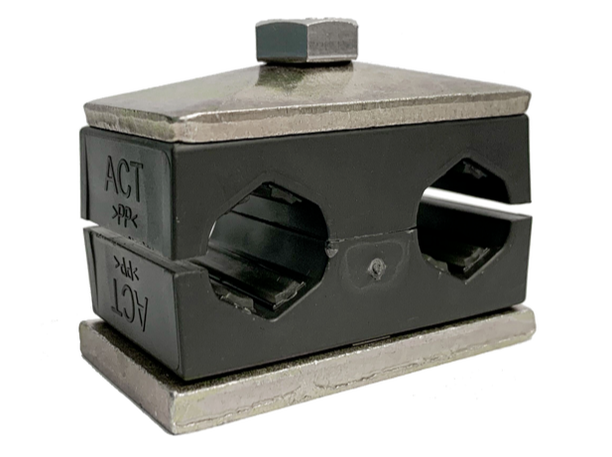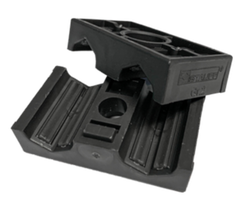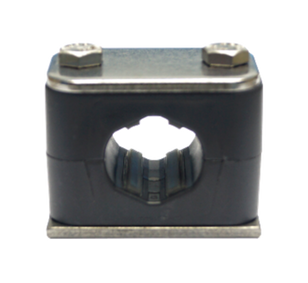|
|
Stauff ACT Clamps are a new set of clamp designs made following the DIN 3015 standards. The acronym ACT means Anti-Corrosion Technology Clamps. Walter Stauffenberg GmbH and Co produce these clamps. KG company was established in the 1950s in Werdohl, Germany. The company is well-known for several products that have widely spread across different continents. The major products from the STAUFF Company are pipework and hydraulic components, tools for rail, energy and technology sectors, etc. all products from this company are following various international standards such as DIN 3015, etc. Stauff ACT Clamps were made to serve as a gripping tool for tubes, hoses, hydraulic systems, and pipes. Its primary purpose is providing stability for hydraulic systems, and they are produced in three different series – standard, heavy, and twin series. Similar to Stauff Clamps, Stauff ACT Clamps provide structural support for machines by minimizing noise and vibration. |
Accessories Element |
|
Body Element & Temperature Dimension |
|
Size & Series |
|
Accessories Material |
|
1. What are Stauff Anti Corrosion Technology Clamps?
|
Anti-Corrosion Technology Clamps are designed especially with special anti-corrosion features to resist rust under several weather conditions such as oil rigs, top-side, and sub-sea. They are mostly used on stainless steel tubes, thereby increasing their anti-corrosion qualities. ACT clamps are produced in the standard and twin series according to the DIN 3015 standards. One of the materials used in the production of ACT clamps is the stainless steel W55. This gives it extra anti-corrosion qualities, and it is achieved by the thorough removal of metallic and non-metallic impurities from the mixture during and after completion of the production process. It can accommodate temperature degrees ranging from -25 ⁰C to 80 ⁰C or -13 ⁰F to +176 ⁰F.
The body of the anti corrosion technology clamp body is from flame-retardant PPV0 plastic material. Flame retardants are a class of chemical substances added to materials (industrial or consumer) during the manufacturing process to ensure that these products' flammability standards are met. These chemicals can be incorporated into the materials during the polymerization process or as a polymer during the molding process. These chemicals are added to help increase the safety of individuals escaping during a fire outbreak in an enclosed building, and it helps reduce harmful emissions into the atmosphere. Alternatively, ACT clamps are referred to as anti-corrosion or anti-crevice tubing support clamps. |
2. How do you use Anti Corrosion Technology Clamps safely?
|
Maintaining a clamp allows it to remain durable and efficient for a long period. Therefore, maintenance should be a priority. One of the ways to sustain clamps is by cleaning off dirt from the surface after use. Ensure you use an anti-corrosive clamp material for clamps installed under the water to avoid corrosion from salty seawater.
Storage is another priority. Ensure the anti corrosion technology clamps are safely stored in a dry place like on a shelf, workshop, or garage. This will keep all elements like water, oil, grease, and others away from the material. |
3. What materials are ACT Clamps made of?
Anti corrosion technology clamps are materials and designs selected from the Norwegian Offshore Norsok Z-010 standards, NACE SP 0108-2008 norms, API RP 552, and standard tubing installation specifications. The body has anti-corrosion elastomer strips that prevent the build-up of seawater between the clamp and pipe. It also helps eliminate stagnant pools of water that can lead to corrosion of materials installed. The ACT clamp body is from fire, oil, rain, and seawater resistant materials, e.g., the plastic material, PPV0 tested as resistant, and grouped following UL94.
For the ACT clamp sizes, the standard sizes are measured in metric and imperial pipe diameters and range between 6mm to 25.4mm and 1/4” to 1”. Although Polypropylene and Polyamide ACT clamp materials have an expanded size value from 6mm to 406mm, however, customized diameter sizes can be provided if requested.
Many of the compatible components with this clamp are made from stainless steel V4A, and this includes hex head bolts, cover, and weld plate.
For the ACT clamp sizes, the standard sizes are measured in metric and imperial pipe diameters and range between 6mm to 25.4mm and 1/4” to 1”. Although Polypropylene and Polyamide ACT clamp materials have an expanded size value from 6mm to 406mm, however, customized diameter sizes can be provided if requested.
Many of the compatible components with this clamp are made from stainless steel V4A, and this includes hex head bolts, cover, and weld plate.
4. What causes corrosion on pipes?
|
Numerous factors can cause corrosion of installed stainless steel pipes. For example, the presence of sodium chlorides (or others) in the seawater coupled with elevated temperatures can lead to the creation of small pits around the surface area of metals (especially stainless steel). These pits are preliminary corrosion that eventually leads to the creation of tiny holes on the surface area. These small holes increase by the day and may damage the tube walls without any physical signs on the outer surface. As the pits get more in-depth, they can be viewed with the unaided eyes, and without maintenance, the pipes get damaged with huge leakage internally.
Another factor that can lead to the corrosion of stainless steel pipes is Crevice Corrosion. Crevice corrosion occurs when the working fluid in the environment is limited to a particular place (crevice). It is important to note that stainless steel can only be anti-corrosive when an ultrathin protective oxide film is present in it. However, there are cases when these ultrathin protective oxide films are broken down and lead to crevices' creation after some time. Crevice corrosion can be harmful because it allows highly flammable chemicals and liquids to escape into the environment. |
5. How can you install ACT Clamps?
The STAUFF anti corrosion technology clamps are configured into different sizes, however, they have the following components:
The twin series components are listed as follows:
- Hexagon head bolts (AS), cover plates (DP), and single weld plate (SP).
- Stacking bolts and safety locking plates
- Hammerhead bolts (HKS), cover plate (DP), and self-locking nuts (MUS-HKS))
The twin series components are listed as follows:
- Safety locking plate and stacking bolts
- Single weld plate (SP), hexagon head bolts (AS), and cover plate (GD)
- Self-locking nuts (MUS-HKS), Cover Plate (GD), and hammerhead bolts (HKS)
|
When installing, you have to know that the assembling of these components for different series is different. However, here are a few steps for you to follow:
|
Distance (Metres) |
1.0 |
1.2 |
1.5 |
2.0 |
2.7 |
Pipe Outer Diameter (mm) |
6.0 - 12.7 |
12.7 - 22.0 |
22.0 - 32.0 |
32.0 - 38.0 |
38.0 - 42.0 |
The table above will show the distance between clamps as recommended by the company.
STAUFF act CLAMPS catalogue

